The competition between Canon EOS M3 and Sony a6000 has been raging for years, with passionate photographers debating the relative merits of both camera systems. Both respected brands offer features that appeal to different types of photographers, so which one is better? This ultimate showdown will compare the Canon EOS M3 and Sony a6000 side by side to see which is the clear winner in terms of image quality, shooting capability, and overall value.
What features should an efficient photo camera have?
There’s no question that an efficient photo camera should have features such as large sensor size, a powerful lens and auto-focus capabilities. However, other qualities can make or break your photo experience. Here are some of the key features to look for in an efficient photo camera:
- When it comes to choosing a good digital camera, one important factor to consider is the resolution. A high resolution ensures that your photographs are captured with sharp detail and vibrant colors, resulting in stunning prints that truly come to life. With higher resolution, you can capture intricate textures, fine details, and rich tones, allowing you to relive your favorite moments with unparalleled clarity and realism. So, when searching for the perfect digital camera, don’t forget to prioritize a high resolution for the best image quality possible.
- Durability is a crucial aspect to consider when choosing a camera. A good camera should not only deliver excellent quality and performance but also be able to withstand various weather conditions and potential impacts. Look for features such as robust weather sealing, ensuring protection against dust, moisture, and other environmental factors. Additionally, consider cameras with shock proofing capabilities, providing extra resilience against accidental drops or bumps. By prioritizing durability, you can ensure that your camera remains in optimal condition, ready to capture stunning moments in any situation.
- Low-Light Performance – For individuals who enjoy capturing moments in low-light conditions, it is crucial to have a camera with excellent low-light performance. When assessing the camera’s capabilities in dimly lit areas, consider factors like sensor size and lens speed. A larger sensor size allows the camera to capture more light, resulting in brighter and less noisy images. Similarly, a lens with a wider aperture (lower f-number) enables more light to enter the camera, enhancing its performance in low-light situations. By paying attention to these features, you can ensure optimal image quality even in challenging lighting conditions.
- A good digital camera should offer manual controls, allowing more advanced users to adjust settings manually for better results. Having the ability to fine-tune settings such as aperture, shutter speed, and ISO gives photographers greater control over their shots, allowing them to capture the perfect image in any lighting condition or creative scenario. With manual controls, photographers can experiment with different exposure settings, depth of field, and creative effects, unleashing their artistic vision and pushing the boundaries of their photography skills.
- Shooting Modes – Choose a camera that offers a range of shooting modes, providing you with the flexibility to capture any moment. From auto mode to manual settings and special scene modes such as sports or night photography, having access to various shooting modes ensures that your creative vision can come alive in stunning photographs. Additionally, if you’re looking for advanced features like burst mode or time-lapse, make sure to check for these options when selecting a digital camera. With the right shooting modes, you can take your photography to the next level and capture moments in any situation.
With these features in mind, it’s time to make an informed decision about which camera best suits your needs. Whether you’re looking for an entry-level model or a professional-grade device, make sure to take into consideration the features discussed above and prioritize those that are essential for your style of photography. With the right camera in hand, you can be confident that your photos will capture every moment with stunning clarity and detail — allowing you to get the most out of your creativity [1].
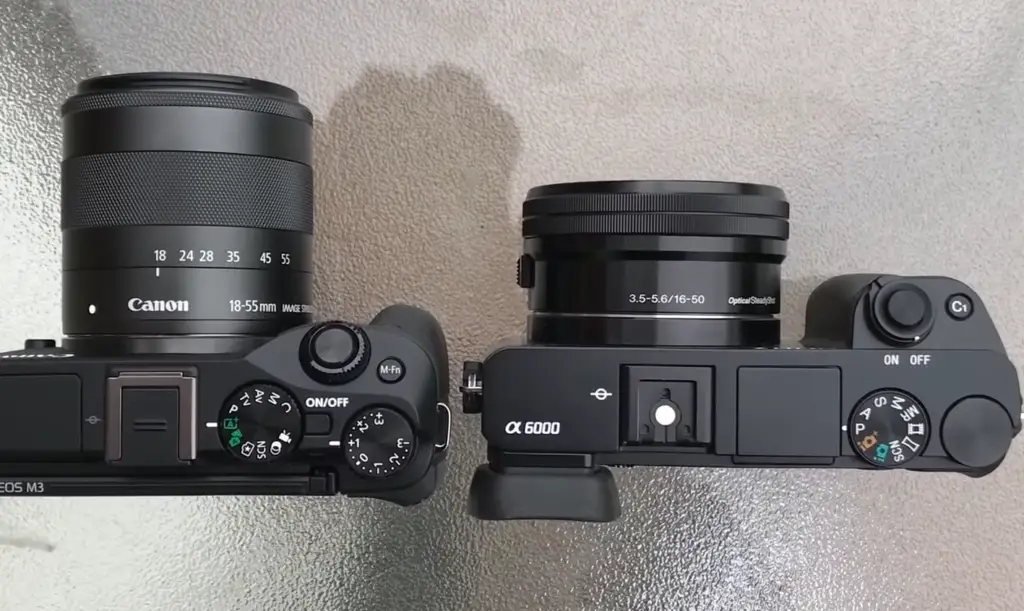
Criteria to compare Canon EOS M3 and Sony a6000 cameras
Design
The Canon EOS M3 is specifically crafted to cater to the needs of traveling photographers. Its sleek and portable design ensures ease of transport, allowing you to capture stunning moments wherever you go. The controls are thoughtfully designed to be intuitive, providing a seamless shooting experience. With its lightweight body, you can effortlessly snap pictures on the move without feeling burdened.
On the other hand, the Sony a6000, while larger and more bulky in comparison to the Canon EOS M3, offers its own set of advantages. Its more traditional design may require some adjustment time, but once you get acquainted with it, you’ll appreciate the camera’s robustness and durability. The Sony a6000 is built to withstand various shooting conditions, making it a reliable companion for photographers seeking versatility and resilience.
Optics
The Canon EOS M3 features an 18MP APS-C CMOS sensor and a DIGIC 6 image processor that produces sharp and detailed images. This combination is adequate for creating beautiful landscapes or portraits, but some may find it lacking when shooting in low-light settings.

The Sony a6000 has been praised for its excellent autofocus performance and low-light capabilities. Its 24MP APS-C Exmor sensor and Bionz X image processor offer an impressive ISO range of 100 – 25600 that allows you to capture stunning shots even in challenging lighting conditions. Additionally, the Sony a6000 offers 11 frames per second continuous shooting speed for capturing fast-moving subjects — a feature that the Canon EOS M3 cannot match.
Videography
On the other hand, let’s talk about the Sony a6000. While it also supports full HD 1080p video recording, it doesn’t have the built-in image stabilization feature found in the Canon EOS M3. However, if you’re willing to invest in a separate gimbal or stabilizing rig, you can easily overcome this limitation. By adding these accessories, you’ll achieve the same level of stability and smoothness in your videos as you would with the Canon EOS M3.
So, when it comes to capturing high-quality videos, the Canon EOS M3 stands out as a top choice, especially if you value built-in image stabilization. However, if you’re open to additional equipment and accessories, the Sony a6000 can also deliver impressive results with the right setup.
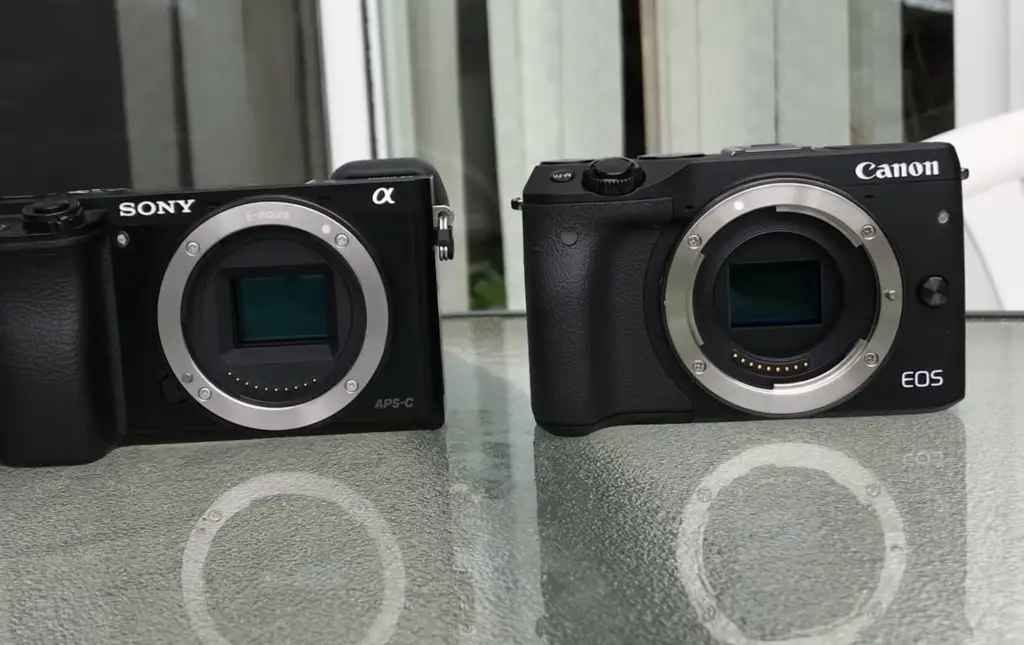
Battery Life
The Canon EOS M3 boasts a battery life of approximately 210 shots, ensuring a decent amount of shooting time. However, the Sony a6000 takes it a step further with its long-lasting NP-FW50 battery, allowing photographers to capture up to 400 shots. This extended battery life makes the Sony a6000 an excellent option for photographers engaged in prolonged shooting sessions, such as wildlife or sports photography, where capturing every fleeting moment is crucial. With the Sony a6000, photographers can have peace of mind knowing they have the power to seize unforgettable shots without worrying about running out of battery.
Price
The Canon EOS M3 is priced at a more budget-friendly rate than the Sony a6000, offering a great entry point into the realm of digital photography. However, if you’re willing to splurge on higher-end features such as autofocus performance and low-light capabilities, then the Sony a6000 might be worth investing in. On average, the Canon EOS M3 can cost from $400 to USD 500 while the Sony a6000 goes for around $600 to USD 700 [2].
Opinion of the experts: Canon EOS M3 or Sony a6000?
When it comes to picking the right camera for a semi-pro photographer, few experts know more than Canon and Sony. Both brands have established themselves as industry leaders in photography, offering some of the most advanced cameras on the market. But when it comes to choosing between their two most popular models — Canon EOS M3 or Sony a6000 — which reigns supreme.
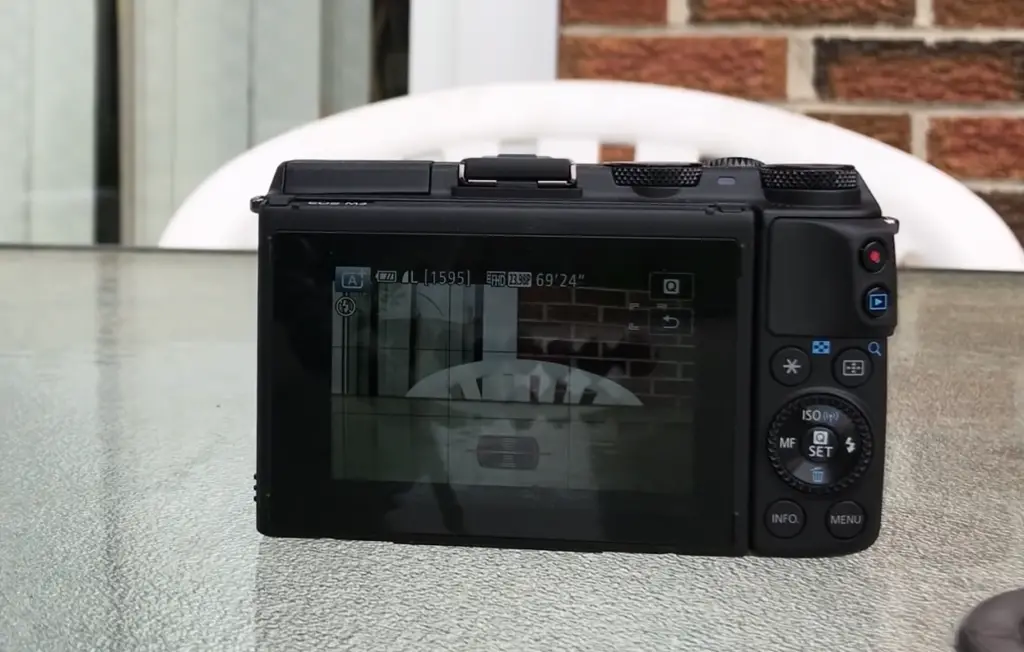
To answer this question, we consulted a panel of professional photographers who have used both models extensively in their work. Here’s what they had to say:
The majority of the photo experts had nothing but praise for the Canon EOS M3. They noted its impressive image quality and fast autofocus system, as well as its intuitive touchscreen interface that made navigating menus a snap. The Sony a6000 was also considered to be an excellent camera, though the experts felt that its manual controls weren’t as easy to use as they could have been.
However, when it came time to decide between the two models based on value for money, there was no competition: the Canon EOS M3 won out by a landslide when it came to bang for your buck, the Canon EOS M3 offered significantly better specs and features at a much lower price. With its excellent image quality, fast performance, intuitive touchscreen interface, and unbeatable value, the experts unanimously agreed that it was the best camera of the two.
If you’re looking for an advanced camera without breaking the bank, then the Canon EOS M3 is an excellent choice. With its impressive specs and features, it’s sure to help you take your photography skills to the next level.
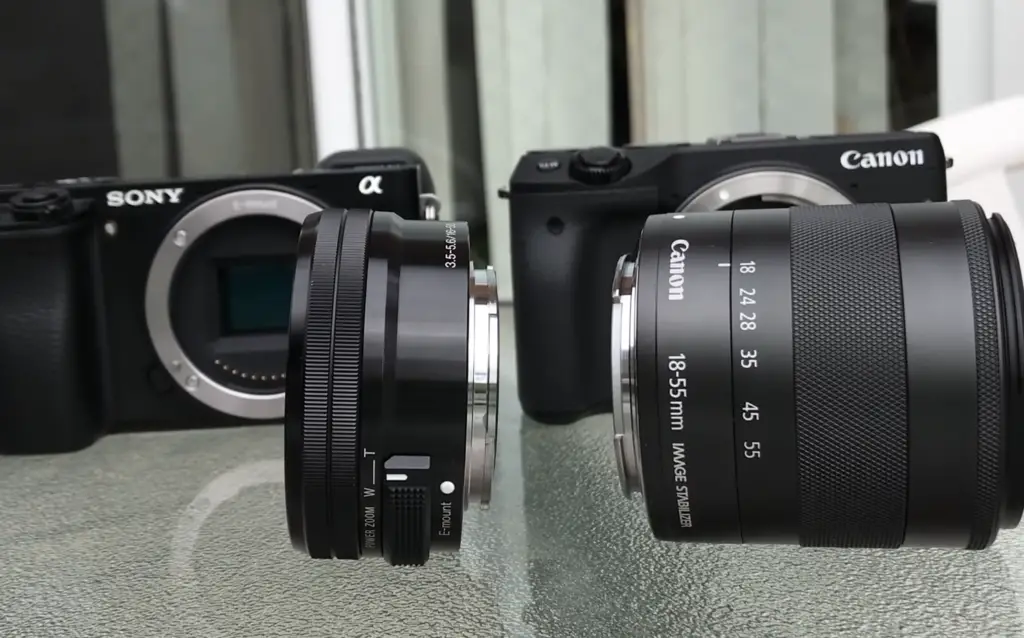
How to correctly use a photo camera?
Before you compare different types of cameras, it’s important to learn how to correctly use a camera and take great photos. Getting the right shot starts with understanding the basics of exposure: aperture, shutter speed, and ISO. Aperture determines the amount of light that is allowed into the lens; shutter speed controls how quickly or slowly the image is taken; and determines how sensitive the sensor is to light. Mastering these three elements of exposure leads to better photos and more creative control over your shots.
When you’re ready, it’s time to start comparing different types of cameras. Point-and-shoot cameras are small and lightweight; they typically have a fixed lens, limited manual controls, and rely on automatic settings. DSLR cameras are larger and heavier but offer more control over manual settings and a wide range of interchangeable lenses. Mirrorless cameras combine the convenience of point-and-shoots with the flexibility of DSLRs, giving you the best of both worlds.
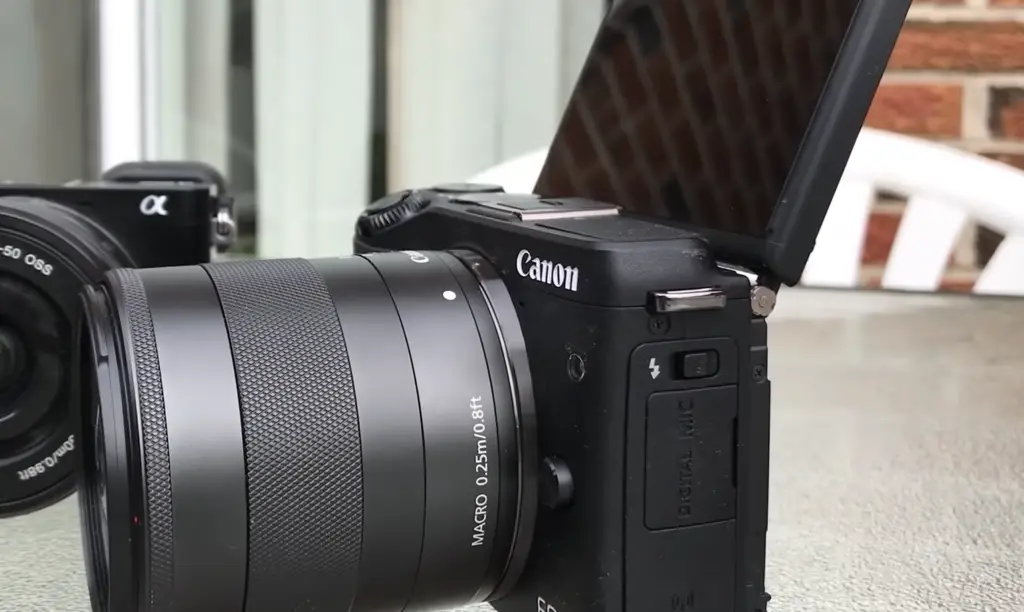
FAQ
Which is better: Sony or Canon digital camera?
The answer to this question depends on your needs and preferences. While both Sony and Canon are trusted brands, they offer different features that might make one better for you than the other.
Sony cameras tend to be more user-friendly and come with a range of features such as built-in Wi-Fi, touch screen displays, and in-body image stabilization. Canon cameras, on the other hand, often have better low light performance and offer a range of lenses that make it easier to get great shots in any situation. Ultimately, the best camera for you is the one that meets your needs and fits within your budget.
What are some tips for taking amazing photos?
Taking amazing photos requires practice and experimentation- Get to know your camera and practice different shots
- Consider using a tripod or other stabilizing device to reduce camera shake
- Play with the lighting and angle of your shot
- Use color, texture, and patterns to create interesting compositions
- Experiment with shooting in manual mode to learn how aperture, shutter speed, and ISO affect your images
- Multiple shots of the same scene to capture the best image
- Look for unexpected perspectives and unique points of view
- Have fun and be creative!
What is the difference between a digital camera and a DSLR?
Digital cameras are often smaller, easier to use, and cheaper than DSLRs. They offer features that make them great cameras for beginners- They usually have built-in modes that make it easy to get great shots without having to understand the complexities of manual settings
Most digital cameras don’t offer interchangeable lenses, so you’re limited in terms of focal length and other features
DSLRs are designed for more serious hobbyists or professional photographers. They offer greater control over- Focal length
- Aperture
- Shutter speed
- ISO settings and more
You’ll also have the option to use different lenses, so you can get the perfect shot for any situation. DSLRs typically cost more than digital cameras, but they offer a lot of options for creative expression and advanced features that make them great for experienced photographers.
What are the benefits of using a DSLR over a smartphone?
Using a DSLR instead of a smartphone offers many advantages, including:
- Professional-quality images with greater clarity and detail
- A wider range of lenses for different situations
- Improved low-light performance and image stabilization features
- Shutter speed
- ISO settings and more
- Interchangeable lenses for maximum flexibility
Overall, DSLRs offer a level of control that can’t be matched by smartphones. They are also much more durable and reliable when it comes to taking photos in difficult conditions. So if you’re looking for greater control and higher-quality images, a DSLR is the way to go.
What features should I look for when buying a camera?
When you’re in the market for a camera, there are several important factors to take into account. Firstly, it’s crucial to consider your budget and the specific features you require. This entails considering the sensor size, lens options, image stabilization, autofocus system, video capability, and low-light performance. Additionally, it’s advisable to evaluate the camera’s user interface, ensuring it offers intuitive and user-friendly features. Lastly, it’s worth considering if the camera includes extras such as built-in Wi-Fi or Bluetooth connectivity. Ultimately, the ideal camera is the one that aligns with both your needs and budgetary constraints.
Do professional photographers use Sony a6000?
The Sony a6000 is a great camera for professional photographers. It has excellent image quality thanks to its 24.3-megapixel sensor, powerful autofocus system and fast shutter speed. Additionally, the camera offers features such as in-body stabilization and Wi-Fi connectivity that make it ideal for both studio and outdoor shooting. As such, professional photographers often rely on the Sony a6000 for capturing stunning photos.
What is the best lens for Canon Rebel?
The best lens depends on your specific needs, as different lenses offer different features and capabilities. Generally speaking, the Canon EF-S 17–55mm f/2.8 IS USM is a great choice if you’re looking for an all-rounder that can handle a variety of shooting situations. This lens offers excellent image stabilization and sharp images, making it great for landscape and portrait photography. Additionally, the Canon EF 50mm f/1.8 STM is an ideal choice if you need something lightweight and affordable that will still yield good results. Ultimately, it’s important to consider your specific needs when selecting a lens as there are a variety of options available.
What can replace the Canon EOS M3?
The Canon EOS M3 is a great camera for beginners and hobbyists, but there are some excellent alternatives on the market. The Sony Alpha A6000 offers superior image quality with its 24.3-megapixel sensor and in-body stabilization system. It also features a range of lenses and accessories that help it stay competitive in the budget-friendly mirrorless market.
Fujifilm X-T30 is another great camera for those looking to upgrade from an M3. It offers excellent image quality and a wide range of features that make it suitable for both photography and videography. Additionally, the X-T30 is more compact and lightweight than the Canon EOS M3, making it an ideal choice for those who are on the go. Finally, the Panasonic Lumix DC-GX850 is a great option if you’re looking for something with 4K video capabilities and an impressive battery life. Ultimately, there are a variety of options available to replace the Canon EOS M3 depending on your specific needs and preferences.
Useful Video: REVIEW: Canon EOS M3 VS. Sony A6000 – Part 1
Conclusion Paragraph
In conclusion, if you are choosing between Canon EOS M3 and Sony a6000 for your camera needs, both are excellent options. Canon is a great choice for photography enthusiasts who want a powerful camera that can take stunning photos in various settings. Sony’s a6000 offers versatility and excellent battery life, making it an ideal option for people looking to capture amazing images on the go. Ultimately, the decision between these two cameras comes down to personal preference and budget.
References
- https://www.iphotography.com/blog/camera/
- https://versus.com/en/canon-eos-m3-vs-sony-a6000





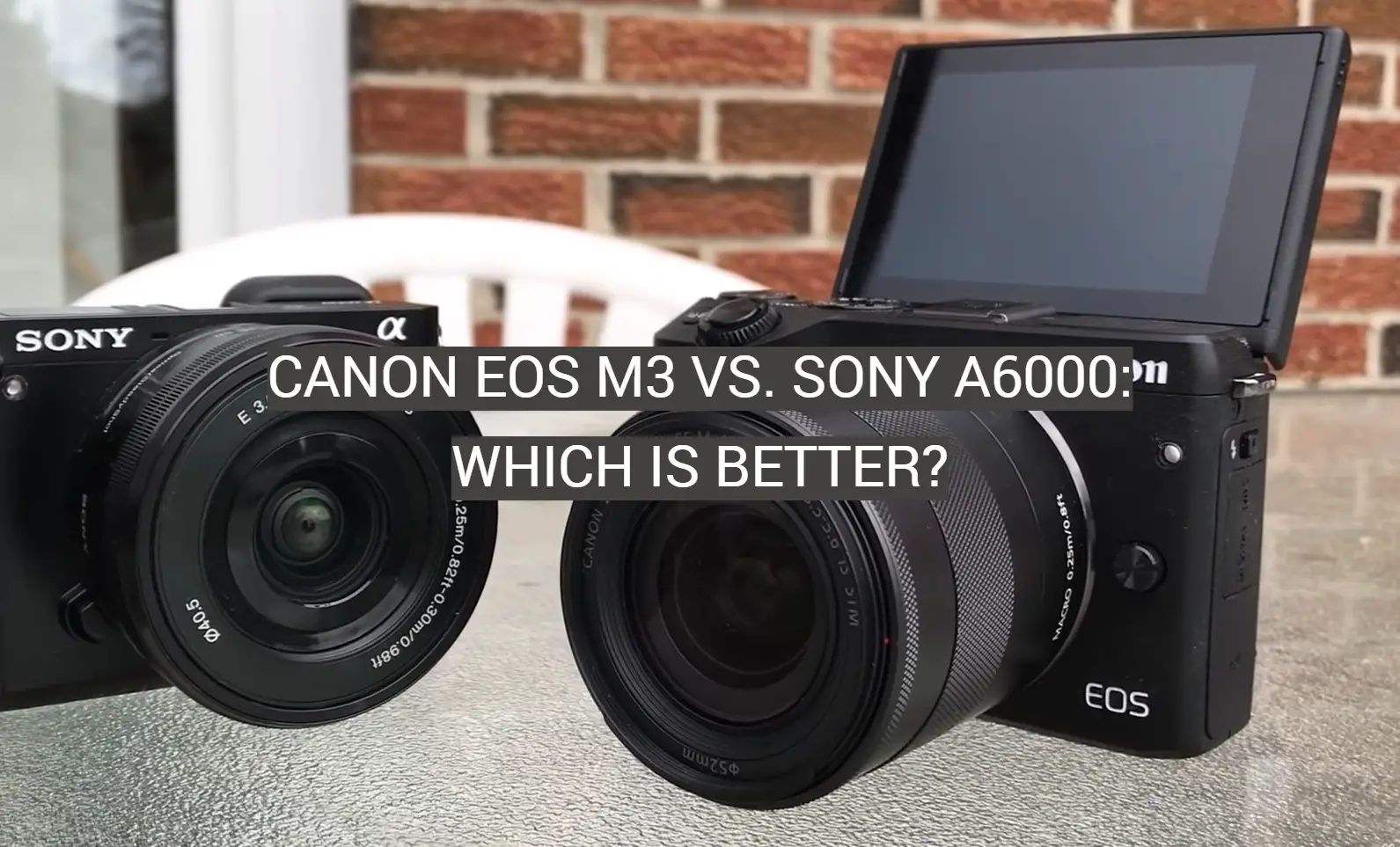
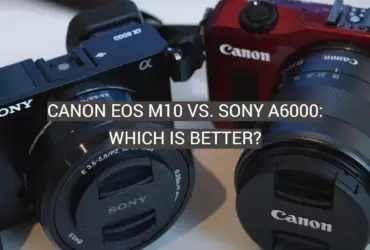

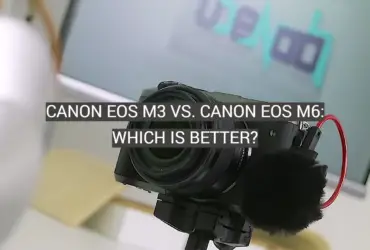
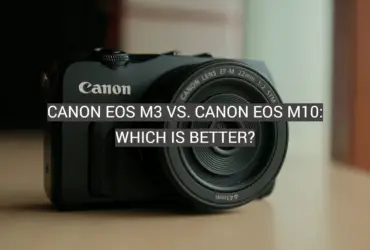
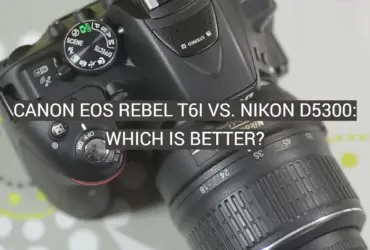
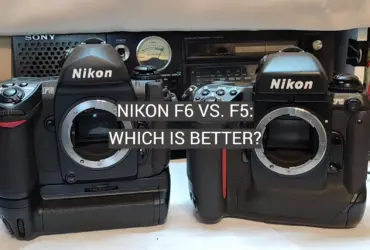
Leave a Reply